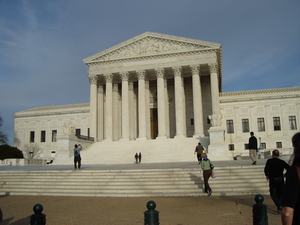Along with the death of innocence occasioned by what was then heartbreakingly referred to as the War to End All Wars, the gentility of American fiction passed out of fashion by the 1920s. Those elegant writers of elegant stories like Henry James and Edith Wharton were either dead or on their way to being out of fashion and in their place arrived a new generation of artists shocked out of complacency and the uncritical acceptance of the dominant views on tradition, value and morality. The decade that would come to be known as the Jazz Age and the Roaring Twenties witnessed a revolution in American literary style and subjects that began to question many of the most cherished and dearly held beliefs about what America as an idea and experiment really meant.
One of the opening salvos against the establishment view came from perhaps the iconic symbol of 1920s American fiction, F. Scott Fitzgerald, who published This Side of Paradise in 1920 and opened the floodgates. Fitzgerald’s novel was considered must-have-read material and was adopted as an unofficial guide to living by many college students. The book’s central message perfectly encapsulated the new spirit of revolution that gripped its younger audience: “All gods dead, all wars fought, all faiths in man shaken.” Fitzgerald cemented his place among the gods of the literary world (those gods were not dead) with The Great Gatsby, which painted a portrait of the upper crust and their concerted effort to draw and maintain a dividing line between their world and the world of everybody else. Jay Gatsby is a bootlegger who attempts to use his illicit wealth to enter into a world not comfortable with such gaucherie; a world in which the illicit routes to wealth were safely distanced by a generation or two. The 1920s were in large part about unbridling capitalism and Fitzgerald’s novel, while of that time, seems oddly displaced from it.
Even more disturbing and critical of the emptiness and even more intent on challenging the traditional views of a starkly defined morality was Theodore Dreiser’s An American Tragedy. This novel, later remade into the masterful film titled A Place in the Sun paints an even more unflattering portrait of America’s obsession with upward mobility and social status. The main character, torn between his relationship with a lower class girl whom he impregnates and the upper class beauty who represents everything that Americans are taught to struggle for results in murder as a metaphor for doing what it takes to get ahead. His only failure was doing murder well.
The fiction of the period ranged from Ernest Hemingway’s reportorial (and overrated) tales of disillusioned expatriates in Europe to Sherwood Anderson’s brilliant re-energized dissections of small town life and the claustrophobic effects upon the psychology of the inhabitants of those idealized hamlets. Another artist who followed Anderson’s path was Sinclair Lewis (not to be confused, as often happens, with Upton Sinclair) who produced a series of satirical novels that examined in detail the iconic figures found in every town in American: business leaders, doctors and preachers. His novel about evangelical hypocrisy, Elmer Gantry, suffers today from seeming almost quaint in its indictment of preachers who don’t practice the contents of their sermons.
There is a strain of bitter reflection on the realization that American history produced unqualified episodes of evil in much of the novels produced in this era. The leading light in this corner of the American literary scene of the 1920s was William Faulkner, especially his chronicles of several generations of members of families both poor and rich in his home state of Mississippi. The Civil War and its multiple inequities informs much of the tapestry of Faulkner’s work and he often uses the inhumanity of that war to draw parallels with the inhumanity of World War I and how it impacted American society.
It wasn’t just long form fiction that was used to explore the darker aspects of society in post-war America. The 1920s produced much of the most powerful and acclaimed poetry in history. Four men stand at the top of this pyramid of the new breed of verse: T.S. Eliot, Ezra Pound, Robert Frost and e.e. cummings. Eliot virtually invented stream of consciousness poetry, strongly informed by allusions to myth and history. Ezra Pound was dedicated to the creating a poetic form from the ground up, endowing 20th century poetry with a voice uniquely its own. At the other end of the spectrum was Robert Frost, who rejected the dense, often impenetrable style perfected by Eliot to focus on deceptively simple verse that slowly revealed its amazing depth. And cummings attacked the conventions of language itself, creatively experimenting with everything from non-traditional diction and the actual typesetting of the printed page itself. Poetry in the 1920s made the great leap toward questioning all of the established rules of the form, pushing boundaries with the same zeal as the writers of novels.
American literature cannot accurately be said to have come of age in the 1920s; not when it had produced everyone from Ralph Waldo Emerson to Henry Melville to Edgar Allan Poe in the previous century. But it was the 1920s and the literary reaction to a world that seemed to have gone topsy turvy if not actually insane that established American literature as a profound influence upon world literature. The names that have become legendary in the world of American literature are overwhelmingly weighted toward those writers who came of age in the 1920s, and the sheer breadth of style and subject matter of those writers is nothing less than breathtaking.





